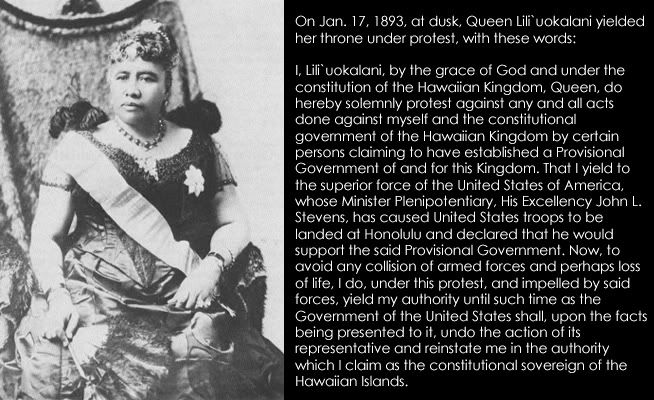
Princess Ka’iulani was Hawaiian royalty of Scottish/Hawaiian descent. She was the niece of Queen Liliuokalani and was next in line to the throne. She died at 23, shortly after the military takeover and subsequent annexation of the islands of Hawai’i.
This biopic was given a limited release across the US. It met with a lot of criticism over the way Sanford Dole (the pineapple grower) was depicted as a sort of benevolent character who was reluctant about the takeover and tried to help the Hawaiians. Historically, Dole was actually one of the major forces behind the takeover because the Hawaiians did not sell land to non-Hawaiians and he was growing tired of having to lease his pineapple fields. He was also against Hawaiians having the right to vote.
Greed and power were the major motivations behind the overthrow of the monarchy. That much of the story is depicted briefly in the film. But in keeping the focus squarely on Ka’iulani, who was sent away to England during the start of the coup, the film manages to gloss over just how ruthless and ugly these businessmen and descendants of missionaries really were. For instance, in order to convince congress to give permission to send a warship to the Honolulu harbor for this travesty, they lied and said Queen Liliuokalani trafficked opium. Do these look like the words of an opium trafficker to you?

When Ka’iulani heard the news, she went to visit President Cleveland and convinced him to leave Hawai’i alone. Unfortunately, he was only in office for 30 more days and the next president taking office was all for indigenous people being robbed of their lands. Being royalty in every sense of the word, Ka’iulani wore elegant dresses and was well educated, despite anti-Hawaiian propaganda that portrayed her as an ignorant savage who wore feathers. “The Barbarian Princess” was what they called her before her famous speech before the American press. Of course, her appearance that day showed exactly who the ignorant people really were. This monologue from the film uses the actual speech Ka’iulani gave that day. Ka’iulani spoke 3 or 4 languages, and excelled at art, swimming and horseback riding.


"Poppies" by Princess Kaiulani, 1890
There was a lot of controversy over British director Marc Forby (29 Palms, Prom Night) and his decision to cast Peruvian Swede Q’orianka Kilcher as the Hawaiian princess. (Although I think Kilcher scores points for studying hula while growing up in Hawai’i and competing in over 200 hula competitions). The director also caught a lot of flack over concocting a fictional Hollywood style romance which so blatantly buys into the overplayed, imperialistic, stereotype of native girl-caucasian guy love that we saw Kilcher portray as Pocahontas in The New World. Also, it must be mentioned that the script was changed after Hawaiian elders found parts of it offensive to Hawaiians. I believe the working title actually was “The Barbarian Princess” before the outcry. A sex scene was also cut for indecent, fictional behavior unbecoming a princess from the Victorian era.
Other issues I have with the film are what was left out, like the fact that Ka’iulani was called the “Peacock Princess” because she owned a flock of peacocks on her 10 acre estate in Hawai’i. It was said that the night she died, the peacocks started screaming to the point that some actually had to be put down. There was also Ka’iulani’s friendship with the writer Robert Louis Stevenson that was completely left out. He wrote this poem about her after she died:
FORTH from her land to mine she goes,
The island maid, the island rose,
Light of heart and bright of face:
The daughter of a double race.
Her islands here, in Southern sun,
Shall mourn their Kaiulani gone,
And I, in her dear banyan shade,
Look vainly for my little maid.
But our Scots islands far away
Shall glitter with unwonted day,
And cast for once their tempests by
To smile in Kaiulani’s eye.
The sets are lovely, of course. Between a palatial mansion in England and Hawai’i, you really can’t screw up that part of it. The score is interesting because I found it persistent, flowing in scenes where I wouldn’t expect music to go. But it fits well with the tone and the mood of the film. As a period piece, it doesn’t have the excitement of an action film, but it is interesting and engaging.
Ka’iulani was the hope of the Hawaiian people and her death was a tragic loss. It has also been questioned by conspiracy theorists that suspect mainland doctors of medicinally bringing about the deaths of several members of Hawaiian royalty. Being originally from Hawai’i myself and seeing some of the degradation that parts of Hawai’i has ultimately faded into (check out an episode of Dog the Bounty Hunter to see what I mean), watching the film was heartbreaking. Although, I would’ve liked to see a little more about the Hawaiian side of Ka’iulani, such as scenes of her surfing or playing music with her Aunt Lili (who was the composer of the infamous ballad “Aloha Oe” and used the love song as a farewell to Hawai’i when she lost her throne).
Aside from Clinton’s apology back in ’93 on the 100 year anniversary of the takeover, this part of US history has been swept under the rug for the most part. Hopefully someday, someone will tell Ka’iulani’s story the right way, from the point of view of Hawaiians. Until then, it wouldn’t hurt to see this film. B.
Princess Ka’iulani Trailer

[Source: Critical Women on Film, Hollywood Hula, UH]


